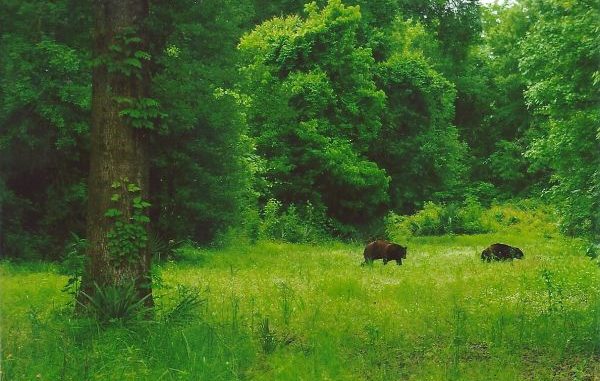
If you are an avid reader of this magazine, then you read about the black bear killing a calf in West Carroll Parish.
I had never seen a black bear in Louisiana until I started flying in a helicopter following Hurricane Andrew in 1992. I was surveying deer habitat in the marsh with the LDWF Fur and Refuge biologists, and on one occasion saw a sow with two cubs in the top of a tupelo gum tree.
At the approach of the flying machine, the bears put their arms around the tree and slid down in quick fashion.
Another time we had just left the Atchafalya Delta and we saw a sow with a cub pulling up roseau cane in the marsh. A year or two later, I was in the Morganza Floodway near Sherburne WMA and watched a bear walking along the edge of a road eating blackberries.
With the restoration of the black bear population in Louisiana, people are beginning to see them, and in the bottomland hardwoods along the Mississippi River hunters are beginning to encounter them.
On the browse survey on the Morganza tract, I had my grandson William along with me. We had just done a couple of transects, and were driving down the woods road in the Mule when I spied something in the road.
I eased the Mule over to it and told William that it was bear poop. William is no novice when it comes to poop — as he helped his Chief collect some turkey poop one day for a school field trip — so he is beginning to fine tune his ability to recognize wildlife sign, despite being only 3 years old.
Now this should have alerted me to what was about to happen, but I knew bears were common on the property.
We drove a little farther and I decided to do a transect in the woods surrounding a food plot. I began walking through the field looking for deer browsing activity when I looked up and saw two large, black objects out in the field.
It was two large bears. The biggest was following the first one, which was a pretty big bear, also.
I went back to the Mule to get my camera and told William to come see the bears, but he said he could see them just fine.
I went and took some photographs; the bears were heading our way, and the first one had seen me. I wasn\’t going to get any closer and was ready to head to the Mule should they decide to keep coming my way; the literature will tell you that the best way to avoid an encounter with a bear is to simply leave the area (William has read the book and has seen bears before).
The first bear turned and went into the woods, with the second larger bear following it. It appeared to me that this was a male following a female bear but I am not an expert. This was the breeding season for bears.
William asked where the bears were and I told him they had gone into the woods, and he started singing a song about the bears are in the woods.
A week later, the bear experts were in these woods and the two animals were videoed for a documentary being produced for the Louisiana Department of Wildlife and Fisheries.
While deer hunters do not like bears because of the conflict with their hunting activities, it is nice to have wildlife diversity in our forests.
At another location I noticed a bear had torn up a wooden board on a deer stand looking for insects.
Perhaps at some point the bears will no longer be protected and will be managed through a hunting program. In the meantime, biologists, hunters, nature enthusiasts, whoever, need to be aware when they are in woods where black bears occur.
There is literature available from LDWF regarding bears and how to avoid conflicts with these animals.


